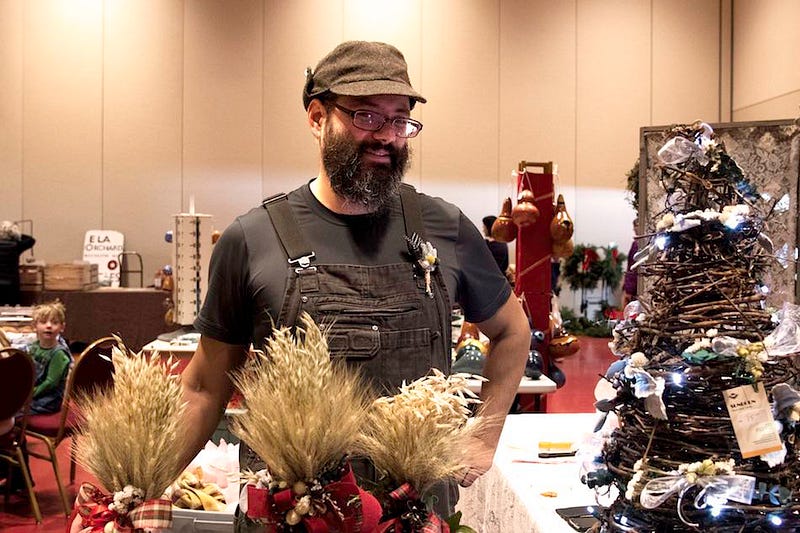By Madison Knobloch

Not everyone has the luxury of hearing a Wisconsin cheese curd squeak as their teeth sink in. Or letting the aroma of huge loaves of spicy cheese bread invade their senses. For almost four years now, Alfonso Morales, associate professor in the department of urban and regional planning at UW-Madison (and former street market vendor), has studied the impacts of farmers markets on their communities. Morales’ goal for markets is to make it possible for more than produce and other goods to be exchanged — he wants to exchange data from market to market.
Farmers markets caught the interest of Morales when he was in his early twenties because he often frequented the Maxwell Street Market in Chicago looking to buy goods on his college budget. He was intrigued by the diversity of the customers, the vendors and the merchandise they were selling. From local Jewish families advertising homemade challah, to Polish immigrants showing handcrafted furniture, locals and tourists alike were lured and lost in the chaos of that street market. Morales was drawn so far in that he has spent twenty-five years learning about every aspect of street markets.
Morales’ team, in partnership with the Farmers Market Coalition, is currently assessing four different impacts of nine markets in six states: environmental, health, social and economic. Farmers markets are widely known for being healthy and environmentally friendly, but this project gets more in depth. From these nine markets, the project measures which farmers use low tillage to conserve soil, which cultivate different crops to improve soil nutrient levels, and which use fertilizers low in phosphorous to minimize polluted runoff. The locality of the food is also gauged in the miles each vendor commutes.
Certain aspects of the market quantify the impact on health, such as whether cooking demonstrations are offered or not. “Many people today don’t know how to cook or what to make with the produce sold at street markets.” If the vendor is selling a vegetable like bok choy, for example, and has a demonstration making stir-fried bok choy and provides a recipe handout, this healthy vegetable is now much more accessible to the common consumer. Another way to make open air markets more accessible is to add an entertainment component, which is tallied under social impacts of the project. Many markets have kid activities where children can learn how to plant seeds and bulbs or play corn hole with Hacky Sacks filled with dried corn from the vendor’s farm. Others choose to employ a local fiddler to accompany the chaos with a fast-paced tune. The economic impacts are measured in the earnings of each vendor, or whether the market as a whole increases tourism.
The end result that Morales hopes to achieve is to increase farmers markets’ organizational capacity and to better understand how the four impacts described affect the community over time. He notes, “We want to increase the ability of farmers market managers to collect, analyze and report data to important partners in their communities.” Morales has seen a successful network of markets at work before. He references Barcelona’s open air market when he admiringly elaborates, “Their markets are woven into the fabric of everyday life because it used to be an important way to get food and to develop a healthy community. Our markets are not always located in the best places for the people who want to use them and are not always supported by local governments.” His response is to work with five markets in the Wisconsin “Main Street Program” to begin to understand market impacts at larger social and organizational scales. He concludes, “It teaches us about the multi-functionality of markets and how we can intentionally fit markets in to our everyday lives.”
Even with all of these metrics reporting how socially and environmentally friendly farmers markets are, they don’t measure the enjoyment that vendors and customers get from a street market. Morales says that there isn’t one vegetable or fruit he looks forward to when market season comes around; he simply looks forward to the experience.
